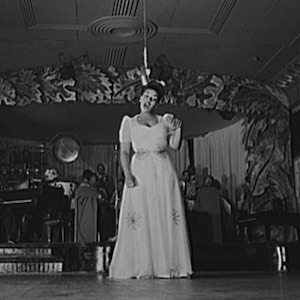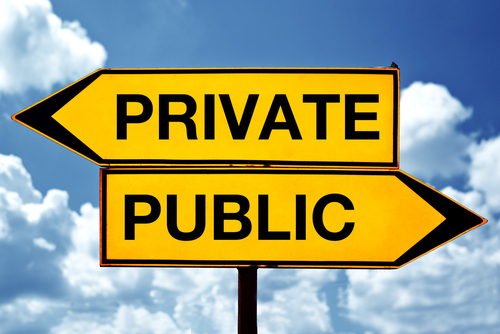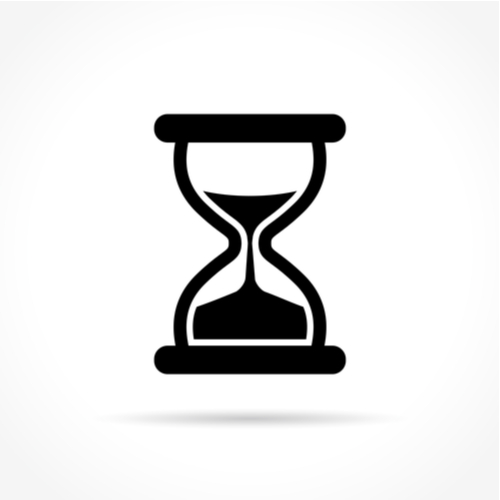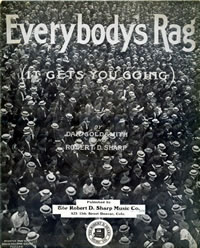Betty Roche – “Trouble Trouble”

The great Betty Roche lays down a classic be-bop jazz blues vocal. She joined Ellington’s band in 1943. Trouble means the same after 60-plus years.

The great Betty Roche lays down a classic be-bop jazz blues vocal. She joined Ellington’s band in 1943. Trouble means the same after 60-plus years.
 I acquired my love of music for free!! I listened to the AM then FM radio all free, gr8 music filtered regionally, and I overheard most of the jukebox music I loved on someone else’s dime!
I acquired my love of music for free!! I listened to the AM then FM radio all free, gr8 music filtered regionally, and I overheard most of the jukebox music I loved on someone else’s dime!
This site is the 2019 version of my jukebox.
With the aid of copyright law, the recorded music business has all but eliminated any free/legal opportunity to hear quality music these days. I’ve participated in the music biz since 1970, and I’ve watched a lot of horrors, BUT this latest format change could be music’s downfall. I hate doom and gloom talk, but I’m concerned.
The music industry’s largest players created competition to free music-sharing sites. They licensed their vast music catalogues with “take all or nothing” music license to the “deep pockets big guys” and businesses they owned.
They granted an ownership-type deal/license to a site located in Sweden, Spotify (former country of the largest pirate site ”Pirate Bay.”) SO the earnings from these bulk licenses deals have become primary earnings for the multinational businesses and the entire music community. These large music business made profits along with corporate underwriters thru stock sales.
Who is left holding the bag? MUSIC and Musicians who need the free music concept for exposure. I took it on myself to correct this situation. I’m offering a sherpa service thru music that has stood “the test of time” for free. This music is free-for-all in the public domain. I have also designed another site as a playlist to highlight music that I like that has limited value to the current music business structure, but I HOPE IT’S MY CONTRIBUTION TO MUSIC. I want to prevent these neglected works of art from being overlooked and lost. I can’t let that happen!! People who create music are under-rewarded, pawns of the crazy costs it takes just to be heard. They should be rewarded! I hope the free music list helps do this. With so little income for songwriters, we’re losing bright young minds to other industries, and I hope sites like these become important enough to be a new way to help music.

These treasured works by the honored poet Robert Frost become ours on January 1st, 2019. Long overdue, extensions of the copyright law will expire on this new year’s day. Many educators consider this very important to our culture. “The public domain has been frozen in time for 20 years, and we’re reaching the 20-year thaw,” says Jennifer Jenkins, director of Duke Law School’s Center for the Study of the Public Domain. “We have shortchanged a generation,” said Brewster Kahle, founder of the Internet Archive. “The 20th century is largely missing from the internet.” Seems the Disney Company is blamed, for its lobbying for the passage of copyright protection laws for Mickey Mouse, as the reason for this cultural bankruptcy. Whoever is responsible, it’s finally going to change.
Fortunately, these poems and many more works become part of the public domain, available to all, by the correct application of copyright law (copyright expiration). So if you want to read these works of art and make a video of yourself, you can post it anywhere with no one to legally stop you. These beautiful poems were published in 1923 or before, making them 95 years old and available for public ownership.
“THE ROAD NOT TAKEN”
Two roads diverged in a yellow wood,
And sorry I could not travel both
And be one traveler, long I stood
And looked down one as far as I could
To where it bent in the undergrowth;
Then took the other, as just as fair,
And having perhaps the better claim,
Because it was grassy and wanted wear;
Though as for that the passing there
Had worn them really about the same,
And both that morning equally lay
In leaves no step had trodden black.
Oh, I kept the first for another day!
Yet knowing how way leads on to way,
I doubted if I should ever come back.
I shall be telling this with a sigh
Somewhere ages and ages hence:
Two roads diverged in a wood, and I—
I took the one less traveled by,
And that has made all the difference.
“STOPPING BY THE WOODS ON A SNOWY EVENING”
Whose woods these are I think I know.
His house is in the village, though;
He will not see me stopping here
To watch his woods fill up with snow.
My little horse must think it queer
To stop without a farmhouse near
Between the woods and frozen lake
The darkest evening of the year.
He gives his harness bells a shake
To ask if there is some mistake.
The only other sounds the sweep
Of easy wind and downy flake.
The woods are lovely, dark, and deep,
But I have promises to keep,
And miles to go before I sleep,
And miles to go before I sleep.
“FIRE AND ICE”
Some say the world will end in fire,
Some say in ice.
From what I’ve tasted of desire
I hold with those who favor fire.
But if it had to perish twice,
I think I know enough of hate
To say that for destruction ice
Is also great
And would suffice.
“EVENING IN SUGAR ORCHARD”
From where I lingered in a lull in March
outside the sugar-house one night for choice,
I called the fireman with a careful voice
And bade him leave the pan and stoke the arch:
‘O fireman, give the fire another stoke,
And send more sparks up chimney with the smoke.’
I thought a few might tangle, as they did,
Among bare maple boughs, and in the rare
Hill atmosphere not cease to glow,
And so be added to the moon up there.
The moon, though slight, was moon enough to show
On every tree a bucket with a lid,
And on black ground a bear-skin rug of snow.
The sparks made no attempt to be the moon.
They were content to figure in the trees
As Leo, Orion, and the Pleiades.
And that was what the boughs were full of soon.

First let’s make sure we understand the concept of the public domain
It consists of all the creative works to which no exclusive intellectual property rights apply. Those rights may have expired, been forfeited, expressly waived, or may be inapplicable. Wikipedia
This means the public owns these works, not an individual author or artist as copyright law dictates. With correct research, anyone can use a public domain work without obtaining permission, but no one can ever own it.
Here are some invaluable tools to understanding and finding Entertainment in the Public Domain:
Summed up the research required: There are four common ways that works arrive in the public domain:
Did some research for us for this January 2019. According to them, on what They call “Public Domain Day.” No one owns the rights to these entertainment gems and more:
Safety Last!, directed by Fred C. Newmeyer and Sam Taylor, featuring Harold Lloyd
The Ten Commandments, directed by Cecil B. DeMille
The Pilgrim, directed by Charlie Chaplin
Our Hospitality, directed by Buster Keaton and John G. Blystone
The Covered Wagon, directed by James Cruze
Scaramouche, directed by Rex Ingram
Edgar Rice Burroughs, Tarzan and the Golden Lion
Agatha Christie, The Murder on the Links
Winston S. Churchill, The World Crisis
e.e. cummings, Tulips and Chimneys
Robert Frost, New Hampshire
Kahlil Gibran, The Prophet
Aldous Huxley, Antic Hay
D.H. Lawrence, Kangaroo
Elmer Rice, The Adding Machine
Bertrand and Dora Russell, The Prospects of Industrial Civilization
Carl Sandberg, Rootabaga Pigeons
Edith Wharton, A Son at the Front
P.G. Wodehouse, works including The Inimitable Jeeves and Leave it to Psmith
These timeless works of art contribute to mankind, and can be republished or used for free by any member of the public.
The story of multiple free uses of the film Frank Capra’s masterpiece “It’s A Wonderful Life is a lesson to us all. ”The copyright was not renewed (because of entertainment business reasoning), it became public domain in 1974, and television stations used the free programming whenever they wanted to save money during the Christmas season. Since then, the film soared in popularity to being considered #1 on the Best of the Christmas movies list.
If you’re a creator or a consumer, you’re still a member of the public, and these works are yours to enjoy because we all own them.
Please don’t confuse the “Fair Use” doctrine with “Public Domain.”
Both are exceptions to copyright protection, but “fair use” does not allow for public ownership it allows someone to use copyrighted material if it meets certain criteria, but the copyright is still owned by the original owner, not the public.

Public Domain laws were designed for the good of the people. “Public domain” refers to creative works that are no longer protected by intellectual property laws, as copyrights, trademarks, or patents. The public owns these works. Anyone can use a work in the public domain without obtaining permission, because no one can ever own it.
The copyright/patent law concept was unknown in the17th century. The laws governing property until then had been organized around physical property rights. The concept of Intellectual property didn’t exist. “Owning an idea” is a relatively modern invention. Today, to own the unique interest in something created from an idea, is an accepted concept, but it was only considered a few hundred years ago, after the printing press was invented in Europe. In the reckoning of the time, new unique ideas could became property, and they needed laws to govern this new form of property. That reasoning was that these properties, without physical form, could only be protected as property for a finite period of time. Someone could exclusively own a non-tangible object for a finite time. The concept, that someone owns something that they thought up, was radical, in the 17th century. But by the 18th century there were laws about this new ownership concept. The body of thought about ownership of ideas was so important, that copyright law, although not formalized before the time the constitution was drafted, was still mentioned for inclusion in the U.S. Constitution. When someone is granted these exclusive copyrights, by law, these rights must expire after a certain time. So all the people then own the intellectual achievements, once the copyright or patent expires.
Here are some ways a work of art can enter the public domain. The copyright expires, the copyright owner fails to renew the copyright, or the copyright owner by his or her deliberate action “dedicates” the work to the public domain.
Generic drugs, whose patent has expired, becomes lower-priced, and with no new research or marketing costs, can be produced by anyone. The absence of these costs allows anyone to make the needed medicines or drugs for less, once the patent has expired. This is a great example of the public good derived from public ownership. The public ownership allows for competition in pricing, because the original creator no longer has any economic involvement. Anyone can use the creation, as if they themselves own it.
This principle applies to literature, entertainment, and music as well. For these timeless art forms to be shared is a benefit to mankind. Public domain levels the playing field (no production or marketing costs) so the “free” concept makes this art accessible to everyone.
For the first time, in January 2019, The United States will celebrate Public Domain Day, when some entertainment masterpieces enter the public domain. Public Domain is very beneficial for the soul of America.
Music in the public domain has stood the test of time and becomes legally accessible.
Public domain music is dependent on music’s need to be shared. This sharing requires a special kind of music love! The first step is record collectors who purchase and preserve original recordings. Fortunately for us, recorded music’s beginnings, including all different kinds of music, have been preserved because of technologies invented by mankind. Recorded music history only goes back about 100 years. Before recorded music, music was written, and that was the only way to preserve musical ideas. The world of written music was a “walled garden” for the few who could read the “open source code” that music was transcribed in. As recorded music’s early history falls into the public domain, the roots of popular music become available to public for free.
We are truly fortunate that the recorded music business has a such short history. It started when Thomas Edison invented the phonograph in 1877. It grew out of the selling of music re-creations created by mechanical technologies called records. There has always been a need to focus on “popular” songs, to stay in touch with the consumers’ pocketbooks. Companies experimented with all kinds of emerging music forms, to find popular trends. The industry tried any form of music that they could use to turn a profit. The artist, or recorded music company by contract, owned the copyrights to this music. Blues and jazz were attractive when it came to the bottom line, as record companies often payed the artists a low flat fee and then owned the copyrights.
Making a profit after the overhead expenses of recording and any $s required to create popular music, is the challenge faced by any recorded music company. So these early recorded music experiments have been preserved by knowledgeable recorded music collectors. Even better for mankind, some of these recorded music curators, different than record companies, valued the quality of the music, not the amount of popular acceptance (profit), made by these creative treasures. Not only did they purchase and preserve these works of art based on quality instead of profit, they made mp3s by converting the analog recordings to digital files. This act of music love is what enables us to publish links to this wonderful music @ PublicDomain4u.com. We too have focused on the music’s quality rather than its popularity. We thank ALL the music collectors/lovers who have in their music love, made it possible for us to publish links to this wonderful music.
This is an example of music standing up to the test of time has made it thru these 4 steps:
Step 1 requires filtering by a recording company employee who selects which artist to record, and what songs to spend the recording monies on. So the original recording company who selected who and what to record.
Step 2 requires someone to purchase the recording. So the music collector, someone purchased and then preserved the “rare” recording.
Step 3 is an act of unrewarded sharing and music love at it’s best, and w/o these postings this site would be hard pressed to find music. So there is a music lover who digitized, and another site which allowed the posting of digital files so fellow music enthusiasts could listen.
Step 4 is us looking through this wonderful music to find gems and publish links to the music we feel needs to be shared with fellow music lovers.

Ragtime is known as “the music that got lost” – mostly because jazz stole its thunder and captured the public’s attention after 1917. Ragtime showcases brilliant pianists like Alonzo Yancey, the lesser known of the Yancey brothers. Alonzo, raised in Chicago, recorded “Everybody’s Rag” in 1943. He serves his piano straight up, and one can only imagine what it’s like to move your fingers as fast as this melody requires. A compelling and ferocious performance.